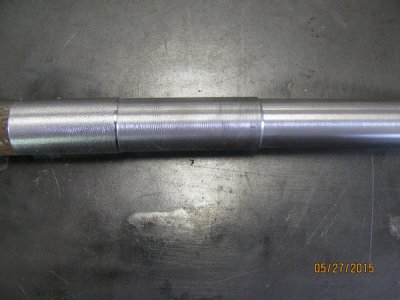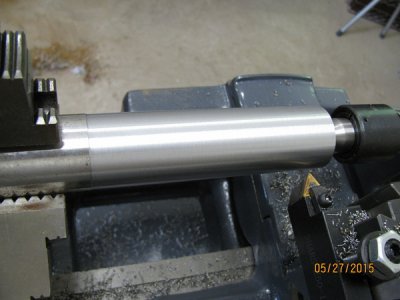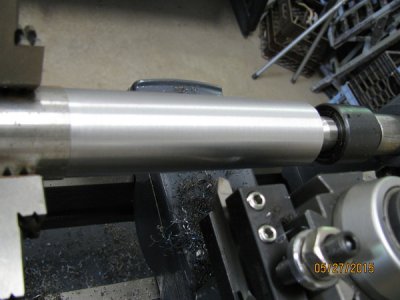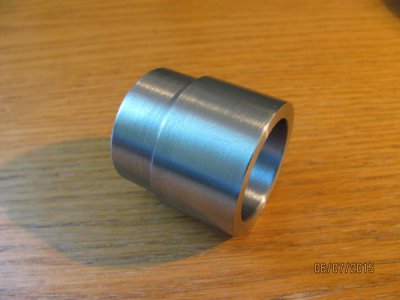- Joined
- Dec 14, 2013
- Messages
- 167
Well, just as my spindle bearings arrived another project took over but I managed to get the bearings installed the day after they arrived. After installation I was still getting chatter but not as bad. After changing the carbide insert on my tool holder and sharpening the high speed steel turning bit life is good.
Here is a picture of a mild steel rod I turned with the larger two diameters on the left showing the chatter I was getting before the bearing change and the smallest diameter on the right after the bearings were changed and a new carbide insert on the tool holder.

Here is a picture of the mild steel bar I was turning today after a finish cut with the carbide bit.

Here is a picture of the mild steel bar I was turning today after a finish cut with the high speed steel bit.

In conclusion, I may have been able to get acceptable results without purchasing new bearings but now I'll never know. I can positively say the lathe runs significantly more quiet than it did with the old bearings after the rehab. Therefore, it must be a contribution to a smoother and chatter-free cut. That's my story and I'm sticking to it.
That's it for now.
Here is a picture of a mild steel rod I turned with the larger two diameters on the left showing the chatter I was getting before the bearing change and the smallest diameter on the right after the bearings were changed and a new carbide insert on the tool holder.

Here is a picture of the mild steel bar I was turning today after a finish cut with the carbide bit.

Here is a picture of the mild steel bar I was turning today after a finish cut with the high speed steel bit.

In conclusion, I may have been able to get acceptable results without purchasing new bearings but now I'll never know. I can positively say the lathe runs significantly more quiet than it did with the old bearings after the rehab. Therefore, it must be a contribution to a smoother and chatter-free cut. That's my story and I'm sticking to it.
That's it for now.


